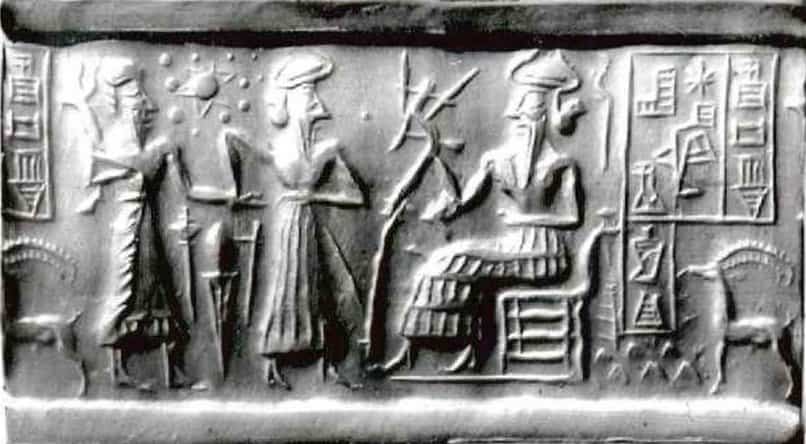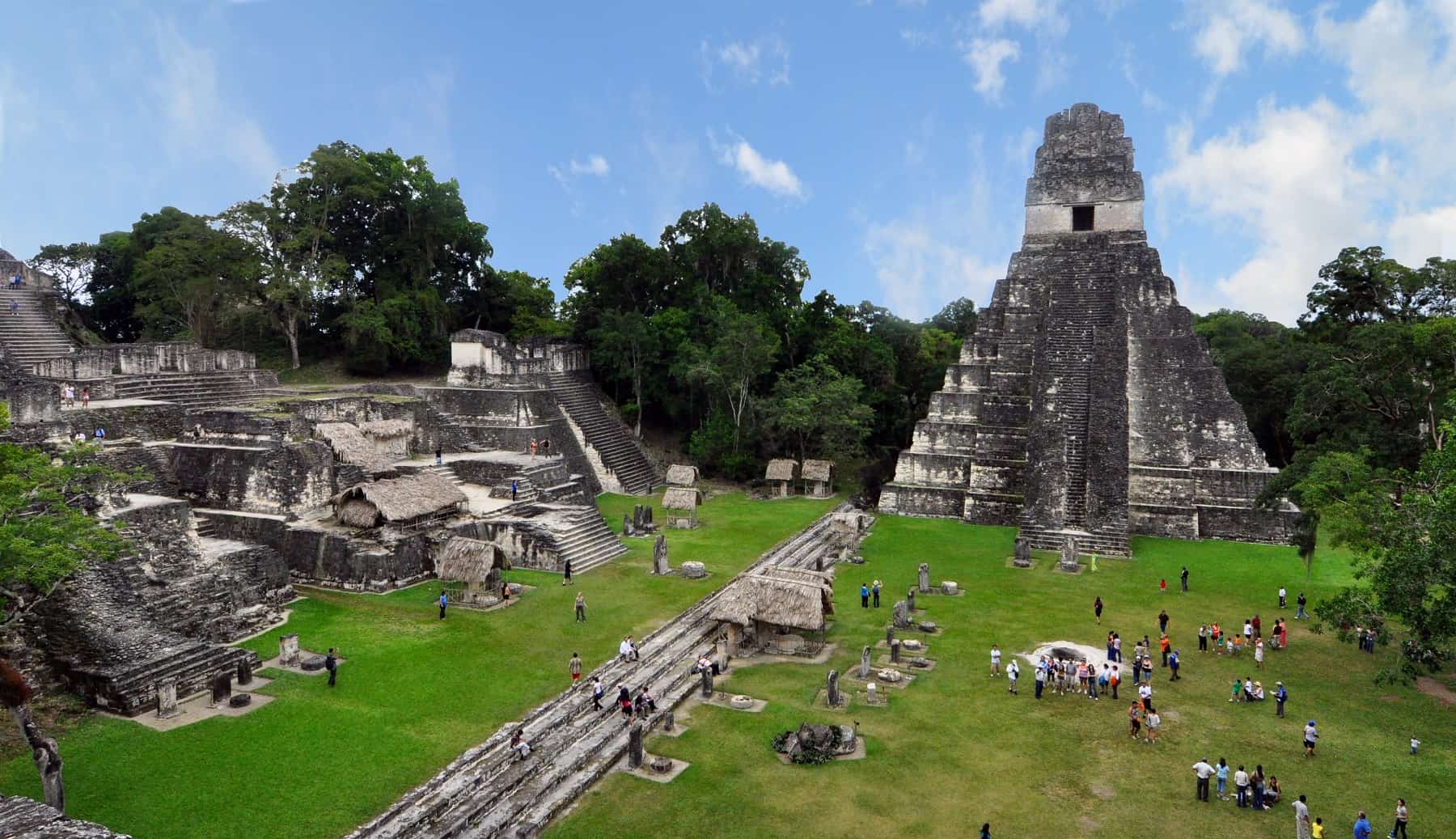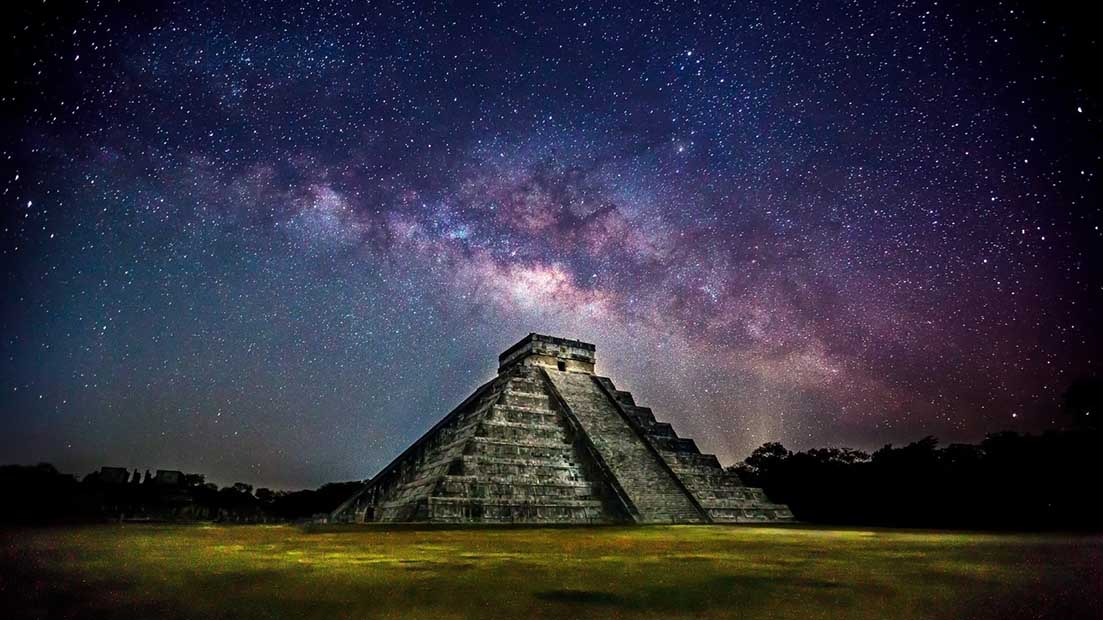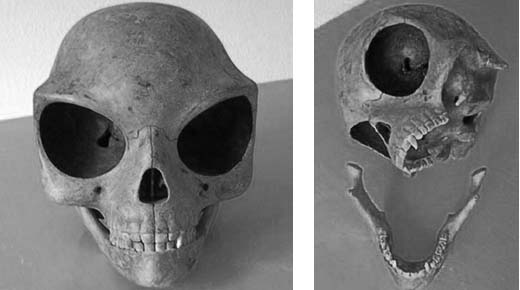
YouTube Video Here: https://www.youtube.com/embed/eIyFTV8y-GE?feature=oembed&enablejsapi=1
The Great Temple of Seti I at Abydos in the Osiris sanctuary contains many fascinating relief carvings on the walls, still rich in color today. The temple is dedicated to six major gods – Osiris, Isis, Horus, Amun-Ra, Ra-Horakhty and Ptah, and also to Seti I himself. The Osiris sanctuary is dedicated to this god of the underworld and his son Horus, god of the sky. Osiris is often depicted with greenish skin, an elongated head, and partially mummy-wrapped legs.

At this temple, we find a depiction considered of importance to ancient astronaut theorists today. The relief carving shows an extraordinary object that some say represents unknown technology. It’s called the Osiris Device or Osiris Stargate Device by William Henry, investigative mythologist.
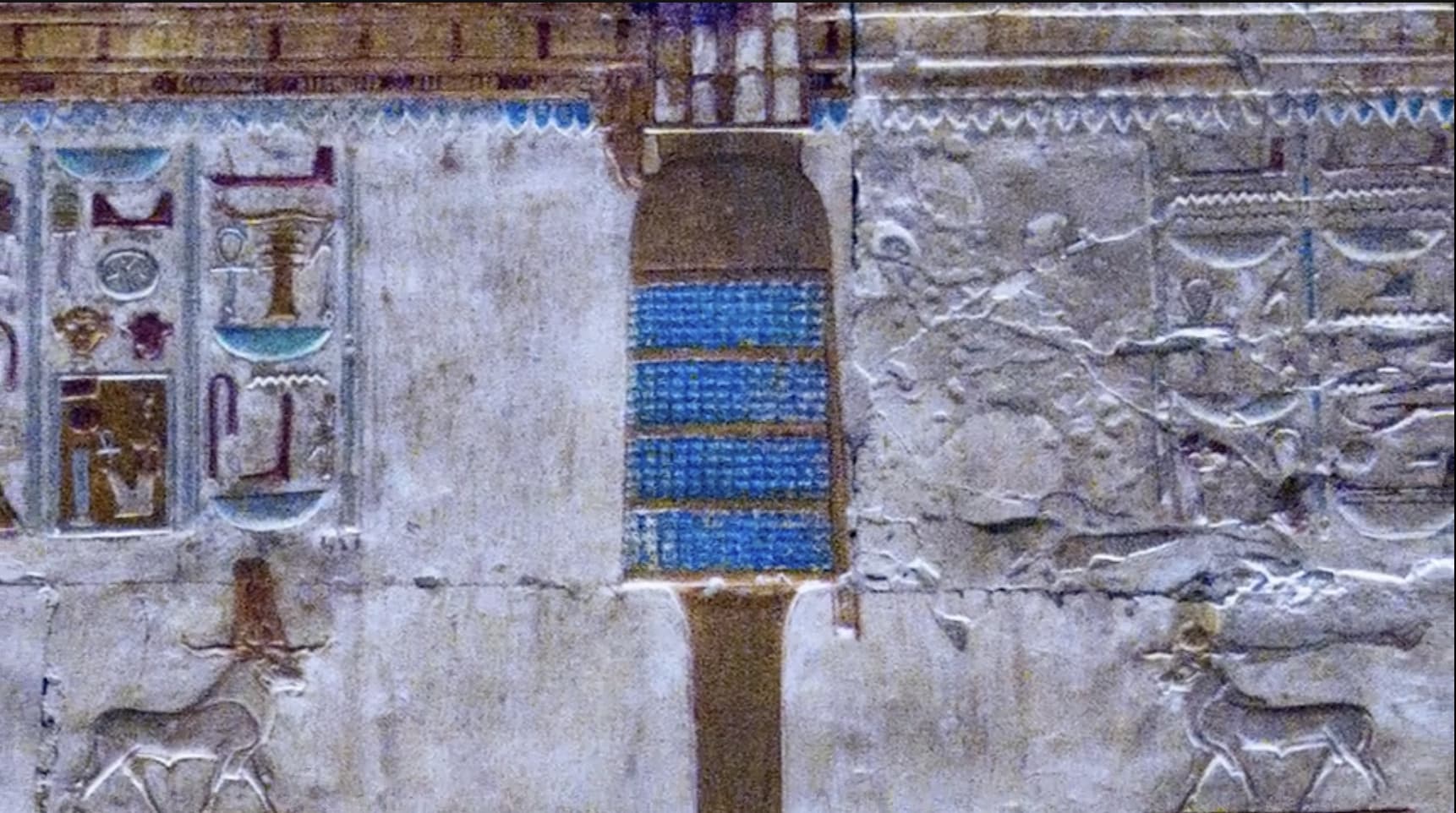
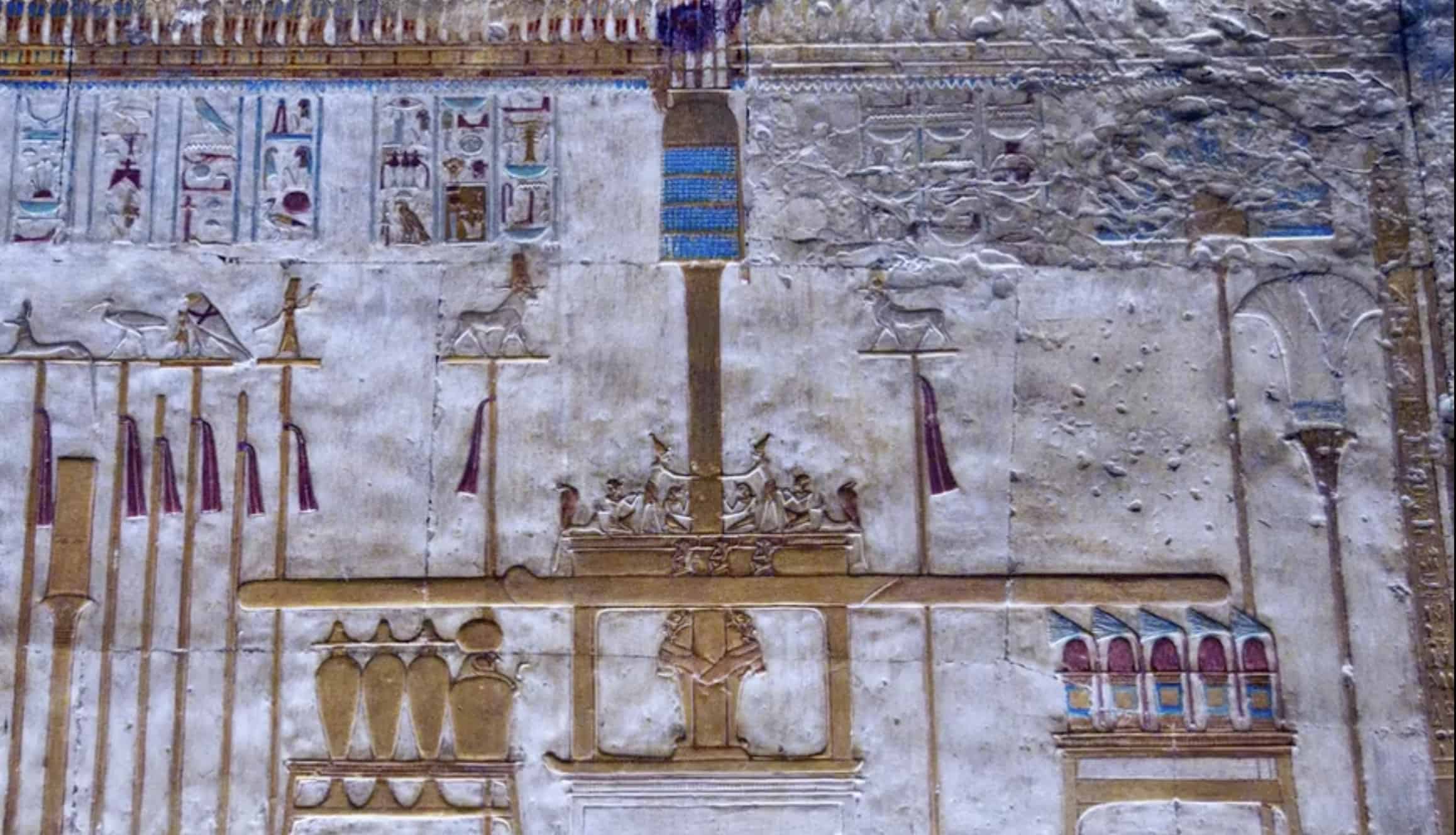
Henry made a connection between the Osiris device and the Tower of Babel from biblical accounts.
“In the 23rd century B.C. the Sumerian king Nimrod built a ladder (symbolized by an H) or Tower (actually a gate) that reached from Babylon into the stars. The jealous Israelite god Yahweh got nervous about humankind ‘making a Name or Renown’ for itself by building this Gate. If successful, says the Book of Genesis, “nothing we can imagine would be impossible for us,” wrote Henry.
Biblical scholars say Nimrod was known as Osiris, the Egyptian god of resurrection, in Egypt. Both are associated with ladders or stairways to heaven. This is key. Inside Sety’s 14th century B.C. temple at Abydos, in the Osiris Chapel, is the magnificent depiction of Osiris as a pillar or tower. In fact, the Egyptians called this Osiris pillar the Ta-Wer or ‘bond between heaven and earth’. Sounds like Babel to me.”
Then the researcher looked at a similar depiction on the opposite wall of the Osiris sanctuary. (see below) He suggests that the shape of the ship reminded him of the shape of a wormhole in space, and that the Osiris device had been transformed into the figure of Seti.
“On the opposite wall of the Osiris Chapel at Abydos is the Osiris Device, enhanced, I noticed, with the ship of eternity upon which the king will sail into eternity as a star. This ship resembles a modern drawing of a wormhole. Pay particular attention to Sety who appears to have transformed his body into the Osiris Device… or is coming out of it. This is a wonderful moment of transformation and resurrection,” wrote Henry.
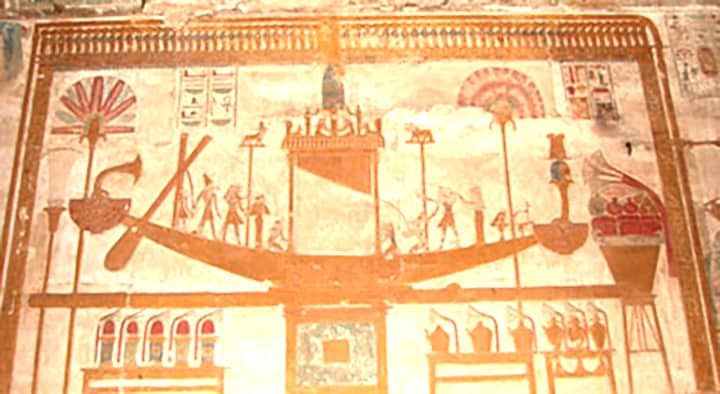
If there is a connection with Osiris, the Sumerian king Nimrod, and the story of the Tower of Babel, could this attempt to create “a stairway to heaven” be the motive for the biblical destruction of the tower, or this technology? Once more, we see interconnected ancient stories between the Egyptians and the Bible.
The Anubis shrine found in King Tut’s tomb could be a physical representation of the Osiris device, which is similar in appearance to the Ark of the Covenant of the Bible.
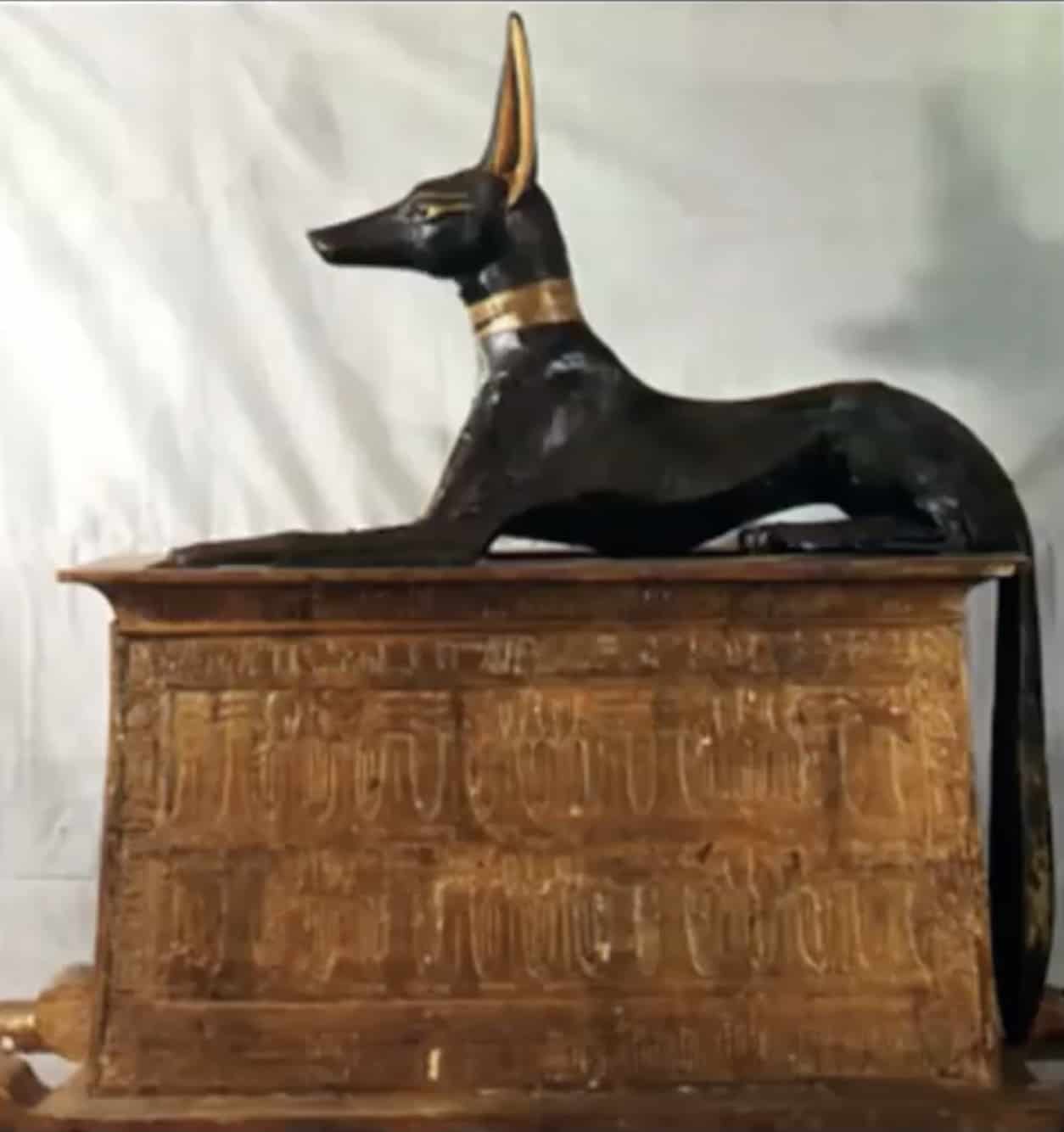
The Ark was said to have strange powers, such as creating lightning or taking flight. It was also said to hold a curse.
According to Live Science:
“When the ark was captured by the Philistines, outbreaks of tumors and disease afflicted them, forcing the Philistines to return the ark to the Israelites. Some stories describe how death would come to anyone who touched the ark or looked inside it.”
Another sacred object resembling the Ark is the Bark of Horus found in the sanctuary of the temple of Horus at Edfu. (see below)
According to Globalegyptianmuseum.org:
“…it is assumed that the so-called solar barks, found near Old Kingdom tombs, were designed to transport the king through the underworld. The best known is the boat belonging to Khufu, now restored and open to the public where it was found, next to his pyramid at Giza. In addition, there was also another type: the bark used to transport the (statue of a) god in Egypt. This type resembled an ordinary Nile boat, but was decorated with an aegis at the prow or at both ends, and instead of a cabin had a shrine enclosing the statue. In most cases these barks also had carrying poles which rested on the shoulders of the priests carrying the bark.”
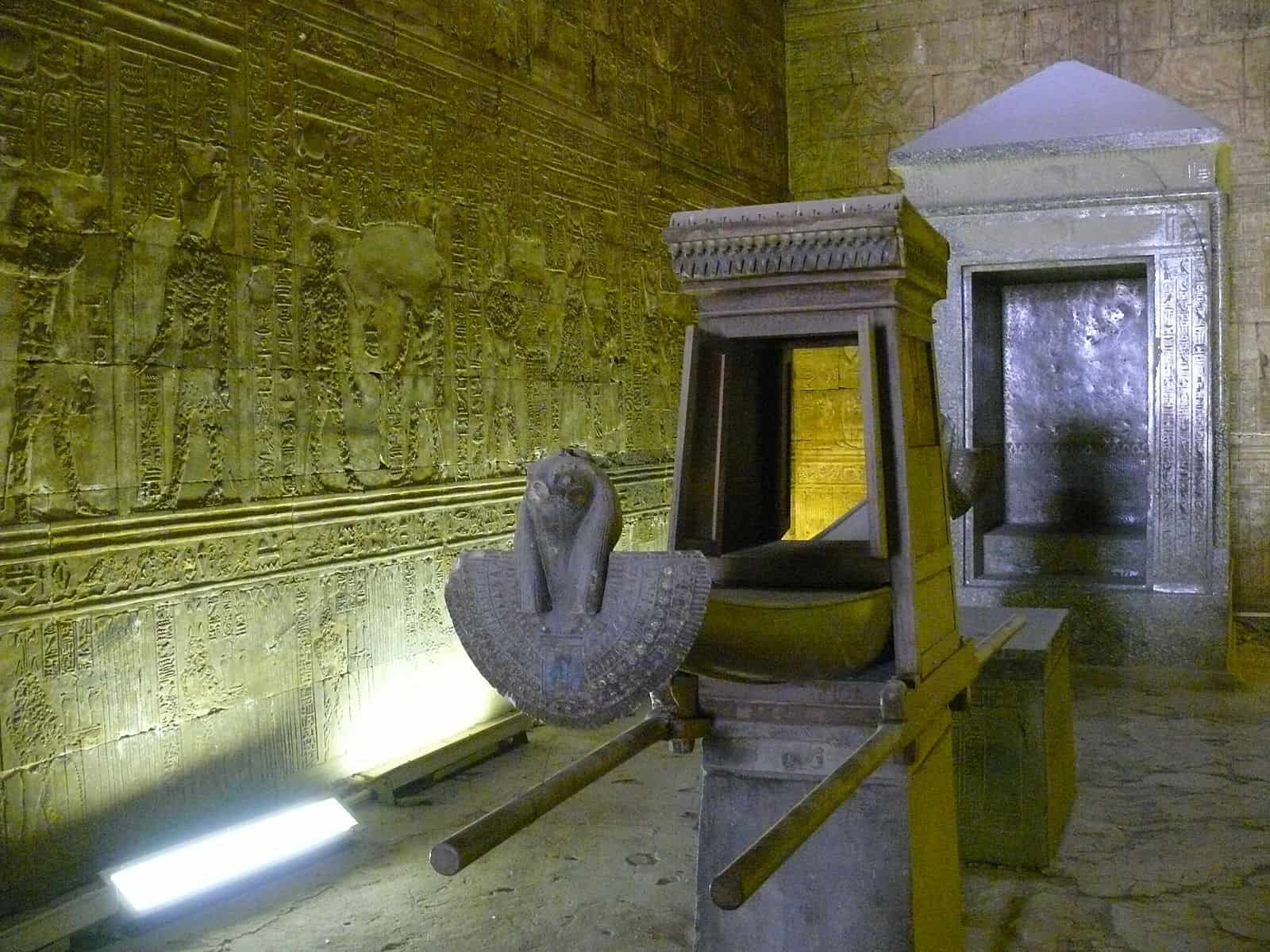
The million-dollar question today is: Where is the Ark of the Covenant?
The Babylonians looted and destroyed Solomon’s Temple around 586 BC. Theories abound, such as that it resides at the Church of Our Lady Mary of Zion in Axum, Ethiopia.
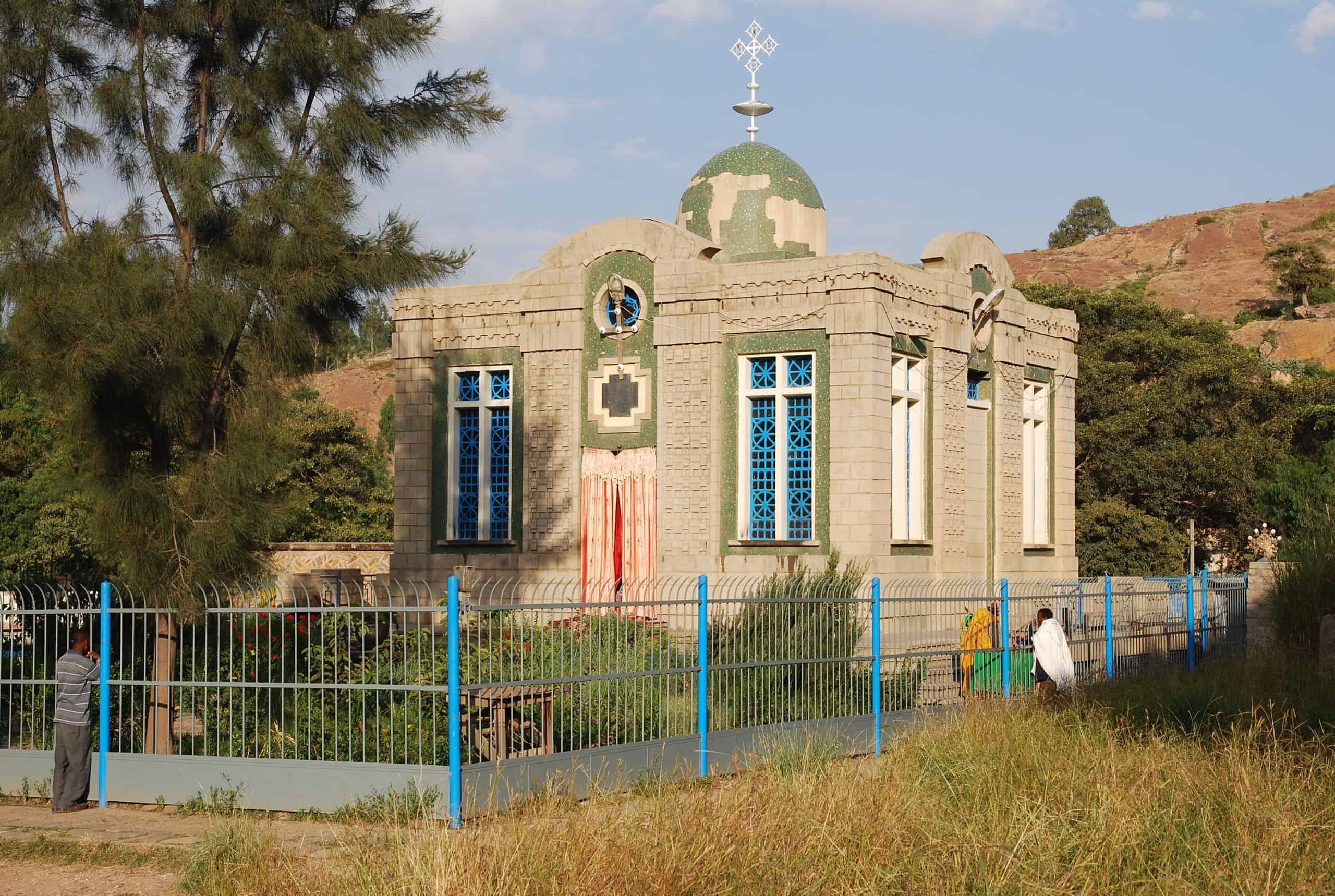
Another theory is that the Ark was smuggled out of Solomon’s Temple by the Knights Templar, who then took it west to Oak Island, Nova Scotia, Canada. If so, it remains hidden, protected by a curse, precisely like the Curse of the Pharaohs at King Tut’s tomb, where the Anubis shrine was found. There are clues that the Templars did bury a well-protected treasure on the island, and many people have died trying to get it.
In addition, there was another curse, from Jacques de Molay, the last Grand Master of the Templars. Persecuted by the King of France, Felipe IV in 1307 on Friday the 13th, the Grand Master was sentenced to burn at the stake in front of the Cathedral of Notre Dame. The Grand Master cursed those who wrongly accused him and proclaimed the Order’s innocence.
“God knows who is in the wrong and has sinned. Misfortune will soon befall those who have wrongly condemned us; God will avenge our deaths,” said Molay. “Make no mistake, all who are against us will suffer because of us. I beseech you to turn my face towards the Virgin Mary, of whom our Lord Christ was born.” (Geoffroi de Paris)
Pope Clement V disbanded the Templars after the accusations of heresy from the King. Were they also hoping to obtain the Ark of the Covenant, or the Holy Grail as well? That’s one conspiracy theory. Whatever the case, both the Pope and King died soon after, and the curse continued long after that, eliminating the entire lineage of the King’s dynasty over more than a decade.
“Pope Clement died just thirty-three days after Molay’s execution. Seven months later King Philip himself became gravely ill and unexpectedly passed away on the 29th of November. Over the next decade, the Capetian dynasty of which King Philip was a part of staggered to its end as each of Philip’s childless sons briefly became King and died.”
It seems that curses might be more than just myths when it comes to Pharaohs and the Templars. Is the curse connected to the mysterious technology associated with these very similar sacred objects?
For more, watch “The Pharaoh’s Curse” on the History Channel.
You can take a visual tour of the Temple of Seti at Abydos below, including more strange out-of-place finds.
Featured image: ark-of-covenant by Suseno via Wikimedia Commons Creative Commons Attribution-Share Alike 3.0 Unported license with the holy bark in the sanctuary of the temple of Horus at Edfu by Ad Meskens via Wikipedia Commons

